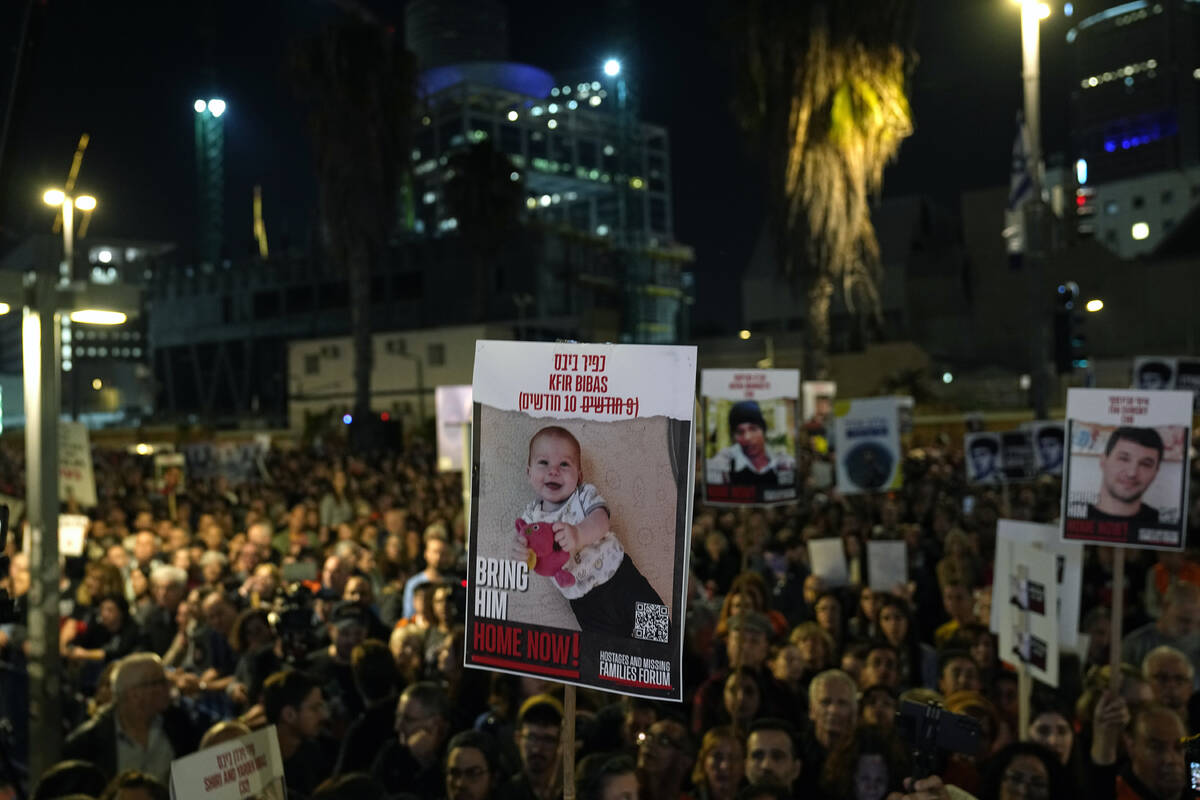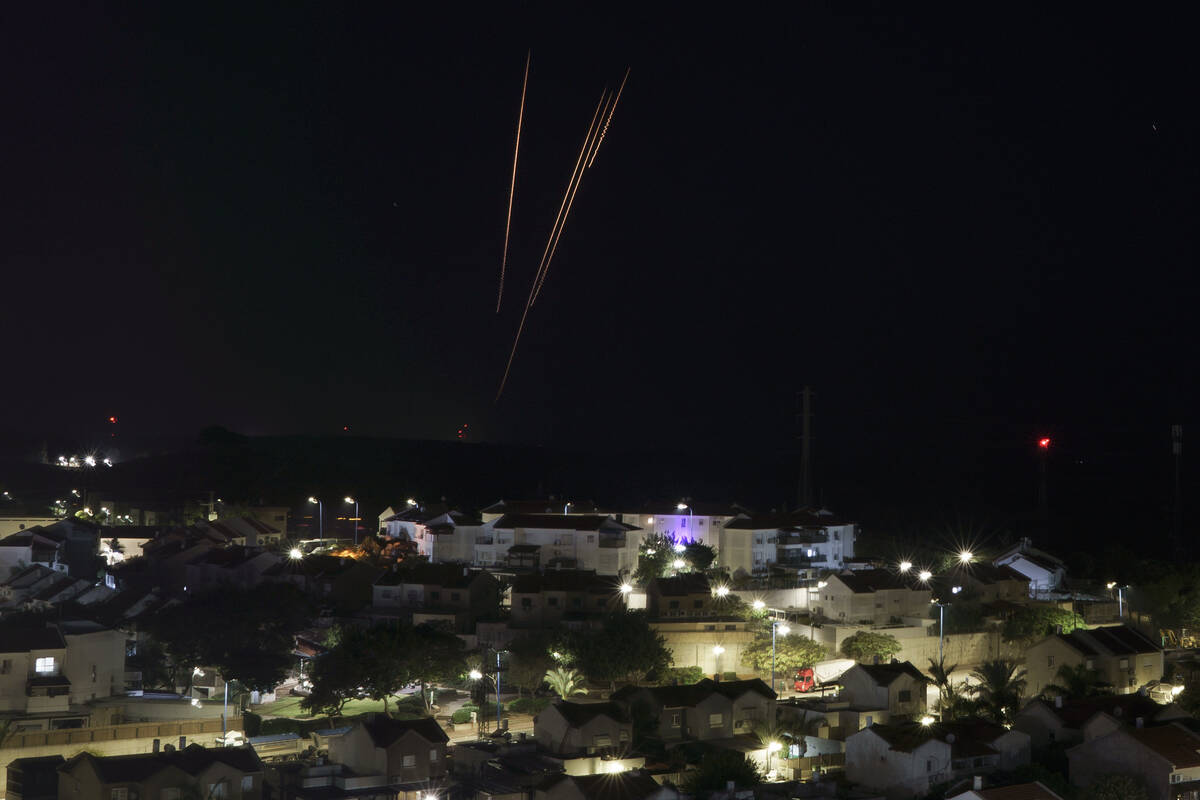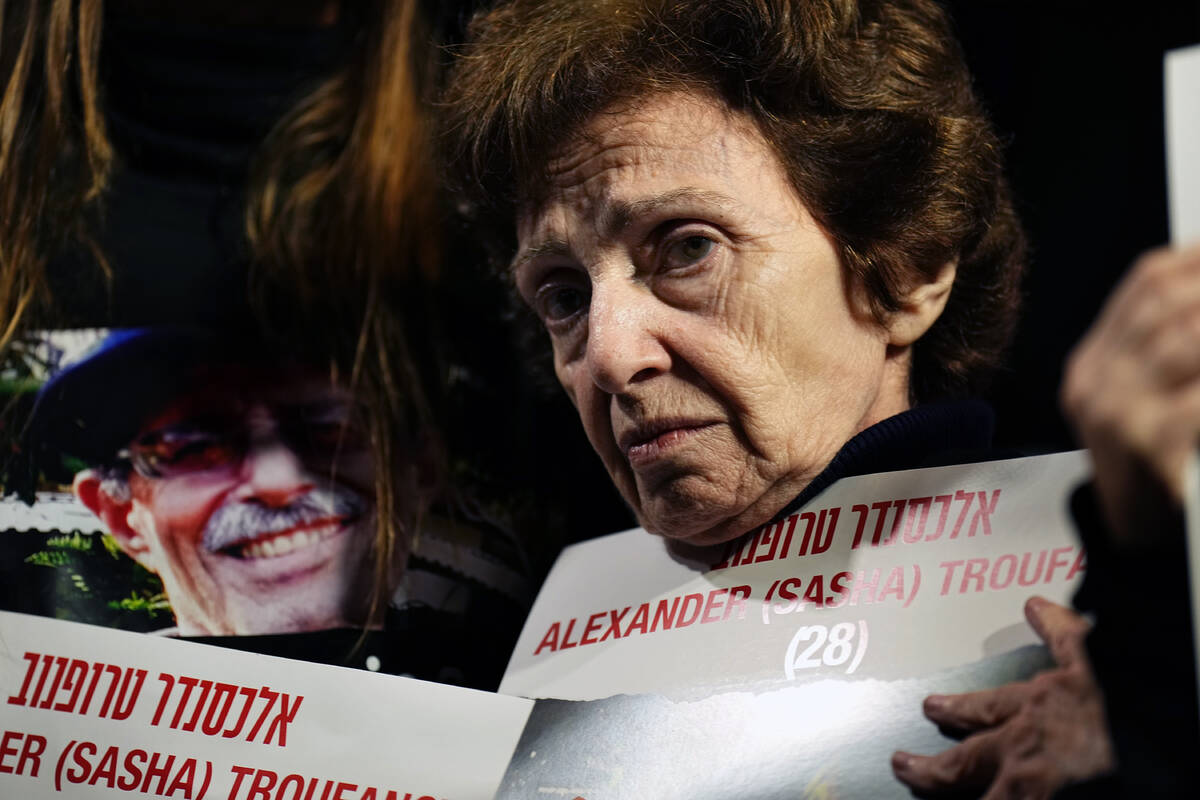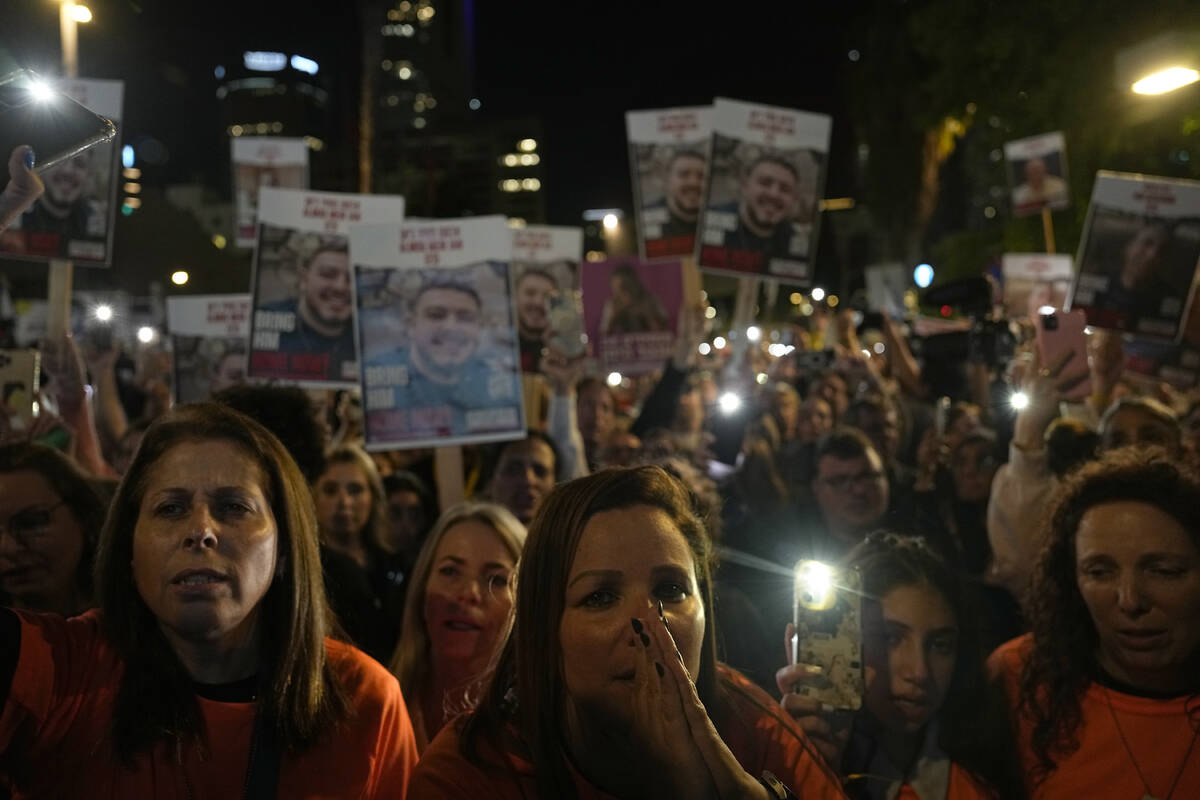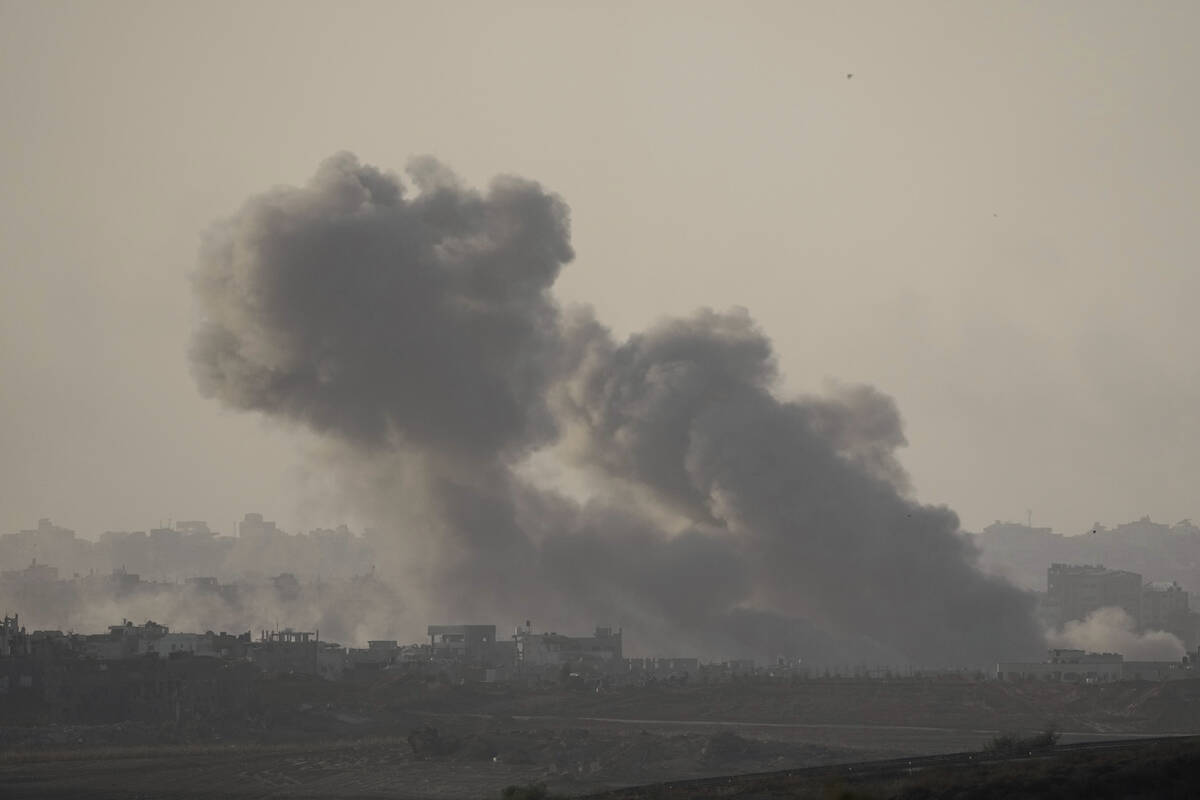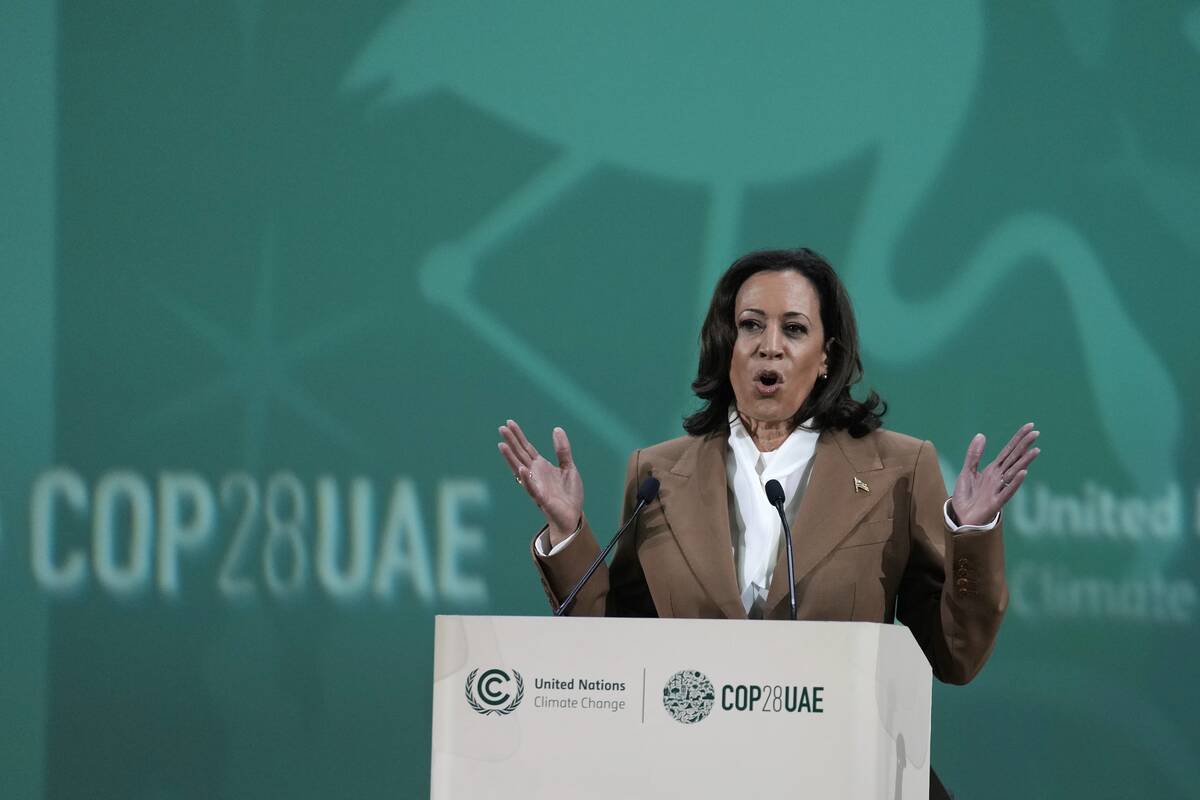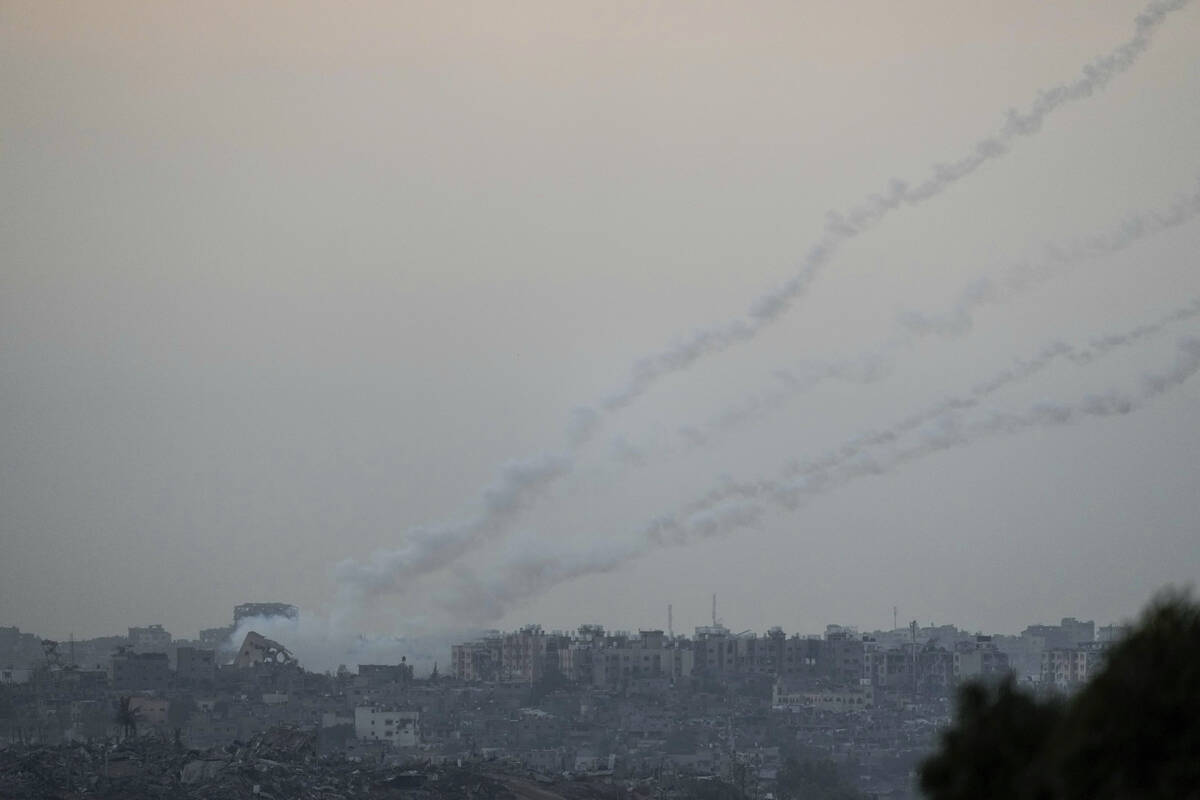Israeli offensive shifts to targets in southern Gaza
KHAN YOUNIS, Gaza Strip — Israel pounded targets in the southern half of the Gaza Strip on Saturday and ordered more neighborhoods designated for attack to evacuate.
Israel’s military said Saturday that it had hit more than 400 Hamas terrorist targets across Gaza over the past day, using airstrikes and shelling from tanks and navy gunships. It included more than 50 strikes in the city of Khan Younis and surrounding areas in southern Gaza.
Meanwhile, Palestinian terrorist groups in Gaza said they fired a barrage of rockets on southern Israel. There were no immediate reports of damage or injuries. Lt. Col. Peter Lerner, an Israeli army spokesperson, said Hamas terrorists had launched more than 250 rockets at Israel since the cease-fire ended.
In the clearest sign yet that a return to negotiations for further truces was unlikely, Prime Minister Benjamin Netanyahu directed negotiators to return to Israel.
“We will continue the war until we achieve all its goals, and it’s impossible to achieve those goals without the ground operation,” Netanyahu said in an address Saturday night.
The truce’s end also saw new activity along Israel’s northern border. Lebanon’s Hezbollah terrorist group said its fighters attacked at least five Israeli posts along the border, and Israeli forces struck several areas on the Lebanese side. There were no reports of casualties.
Map splits Gaza into numbered parcels
With the resumption of fighting, the Israeli military published an online map carving up the Gaza Strip into hundreds of numbered parcels and asked residents to familiarize themselves with the number of their location ahead of evacuation warnings.
On Saturday, the military listed more than two dozen parcel numbers in areas around Gaza City in the north and east of Khan Younis. Separately, it dropped leaflets with evacuation orders over towns east of Khan Younis.
Mark Regev, a senior advisor to Netanyahu, said Israel was making “maximum effort to safeguard Gazan civilians” and the military has used leafleting, phone calls, and radio and TV broadcasts to urge Gazans to move from specific areas. “We’ve not asked the whole population of the south to relocate,” he said.
Regev added that Israel is considering a future security buffer zone that would not allow Gazans direct access to the border fence on foot, adding that Israel does not plan to annex any territory from Gaza.
Israel says it has killed thousands of terrorists, saying it is targeting Hamas operatives and blames civilian casualties on the terrorists, accusing them of operating in residential neighborhoods. Israel says 77 of its soldiers have been killed in the ground offensive in northern Gaza.
Also Saturday, the Palestinian Red Crescent said it had received the first convoy of aid trucks through the Rafah crossing since fighting resumed. Wael Abu Omar, a spokesman for the Palestinian Crossings Authority, said a convoy of 100 trucks entered Gaza, including three carrying nearly 40,000 gallons of fuel.
Meanwhile, Vice President Kamala Harris, in Dubai on Saturday for the COP28 climate conference, said in a meeting with Egyptian President Abdel Fattah Al-Sisi that “under no circumstances” would the United States permit the forced relocation of Palestinians from Gaza or the West Bank, the besiegement of Gaza or redrawing of its borders, according to a U.S. summary.
Harris was expected to outline proposals with regional leaders to “put Palestinian voices at the center” of planning the next steps for Gaza after the conflict, according to the White House.
President Joe Biden’s administration has emphasized the need for an eventual two-state solution, with Israel and a Palestinian state coexisting.
The Oct. 7 attack by Hamas and other terrorists killed about 1,200 people, mostly civilians, in southern Israel, and around 240 people were taken captive.
The Health Ministry in Gaza announced that the overall death toll in Gaza since Oct. 7 surpassed 15,200, a sharp jump from the previous count of more than 13,300 on Nov. 20. The ministry does not differentiate between civilians and combatants.
Heightened concern for hostages
The renewed hostilities have heightened concerns for 137 hostages who, according to the Israeli military, are still held by Hamas and other terrorists after 105 were freed during the truce.
A 70-year-old woman held by Hamas terrorists was declared dead on Saturday, according to her kibbutz, bringing the total number of known dead hostages to eight.
At a rally of tens of thousands in Tel Aviv, released hostages called for the rest to be freed. In a video address, Yaffa Adar, 85, spoke up specifically for children being held, saying, “I want to see them now — not when I’m in a coffin.”
Hamas and Israel differed on who was still being held.
Hamas’ deputy leader, Saleh Arouri, told Al-Jazeera that any remaining hostages are men who served in the Israeli military. That contradicted another top Hamas official, Osama Hamdan, who told The Associated Press on Friday the group was willing to trade more hostages but rebuffed an Israeli demand to release 10 female soldiers.
Israel’s Defense Minister Yoav Gallant said Hamas violated the truce agreement by refusing to return two children and 15 women.
During the truce, Israel freed 240 Palestinians. Most of those released by both sides were women and children.
———
Mroue reported from Beirut and Anna reported from New York. Associated Press writers Julia Frankel, Iris Samuels and Nebi Qena in Jerusalem contributed to this report.



